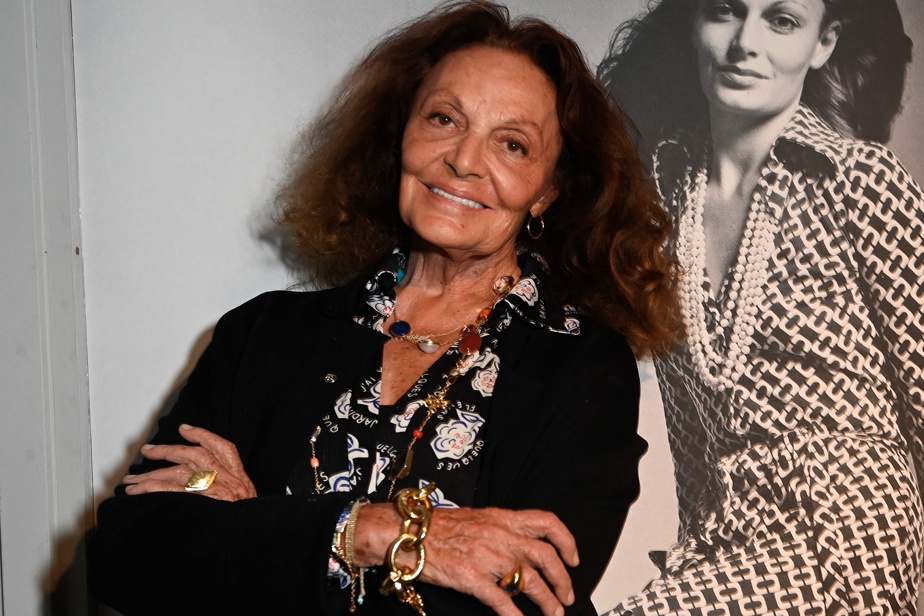(Brussels) In the world of fashion, his name is synonymous with American success. Diane von Furstenberg moved to New York in 1970 and returned to her hometown of Brussels to celebrate half a century of her “timeless” wrap dress.
“I truly lived an American dream. At 25, I was making 25,000 dresses a week. Everything happened very quickly, ”she recalls in an interview with AFP, on the occasion of an exhibition in the Belgian capital retracing her career.
According to the organizers, this is the first time that a museum in Europe has dedicated an exhibition to the Belgian-American designer, who is now 76 years old. “It’s very moving,” she says.
At the Fashion Museum
The little wrap dress, renowned for its simplicity and practicality (in supple, crease-resistant jersey fabric), is available in dozens of models printed with each brighter color than the next.
“No zipper, no button, very adjustable!” What put the woman in confidence, and if you are confident, you are beautiful, “underlines the designer with a broad smile.
The self-proclaimed “great feminist” has embarked on philanthropic work to support women’s emancipation and empowerment, an aspect also addressed in the exhibition titled Woman Before Fashion.
Diane von Furstenberg hosts with her second husband, the American media magnate Barry Diller, a foundation which awards five prizes each year (the DVF Awards) celebrating personalities supposed to inspire other women.
And, in terms of reference models, she first cites her mother, a survivor of the Nazi concentration camps and who in her eyes forever embodies combativeness and the quest for freedom.
Liliane Halfin, born Nahmias, from a Jewish family in Thessaloniki (Greece), was deported and locked up in Auschwitz (Poland), then Ravensbrück (Germany) when she was a young married woman in her twenties. .
When she was released in 1945, she weighed less than 25 kg. To the point that the doctors advise against short-term maternity.
“She was a skeleton in the middle of the ashes, she wasn’t supposed to survive, but she did,” said Diane von Furstenberg, who likened her birth 18 months later to “a miracle.”
After the Second World War, her parents found themselves in Brussels, where the future designer lived until she was 14, before going to boarding school in Switzerland and England.
She met her first husband during her studies, the jet-setter prince Eduard Egon von Fürstenberg, with Italian-Austrian roots, whose name she kept after their separation (except the umlaut on the “u”, the umlaut). A surname that has become a brand sold in department stores around the world.
For Nicolas Lor, who designed the exhibition in Brussels, one of the keys to the success of DVF was the successful mix between a typical European model of little dress and soft materials giving the garment its comfortable side.
“She mixed this concept of the little dress thought up in the 1920s with the question of sportswear and comfort which clearly defines the wardrobe in the United States”, explains this French fashion expert, who worked for the houses of Chanel and Christian Dior.
The just thirty-year-old also acknowledges having discovered while preparing for the exhibition the Belgian roots of the designer, who did not train in the very famous fashion schools of La Cambre in Brussels or the Beaux-Arts in Antwerp (like Ann Demeulemeester or Dries Van Noten in particular). “For me she was American,” smiles Nicolas Lor.
The exhibition runs until January 2024.















